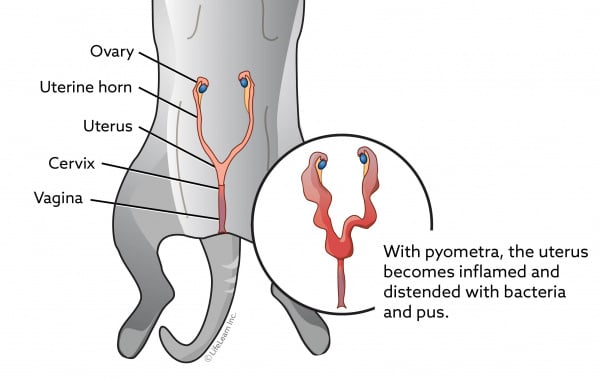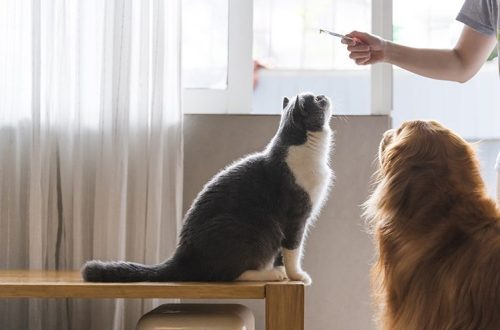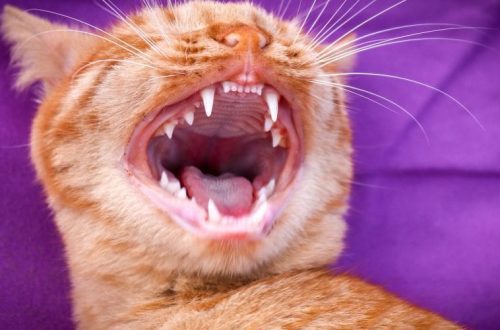
Pyometritis in a cat
Pyometra is a purulent inflammation of the uterus, an accumulation of purulent contents in the horns of the uterus. The disease is very dangerous and, if not treated promptly, can be fatal. The disease can develop in any sexually mature cat that has not undergone sterilization.
Contents
Causes of pyometritis in a cat
There are many reasons why cats develop pyometra. Main and them:
- hormonal disorders
- advanced endometritis (inflammation of the uterine lining)
- the use of hormonal drugs to control estrus
- genital tract infections
- uncontrolled mating, etc.
Symptoms of pyometritis in a cat
The first symptoms of pyometritis in a cat appear 4 to 8 weeks after estrus. Symptoms depend on the form of the course of the disease. With an open cervix and vagina, purulent masses are abundantly released. In places where the cat sat or lay, brown spots can be found, the animal is depressed, its appetite decreases, thirst increases, body temperature rises. When the cervix is closed, pus accumulates in the horns of the uterus and does not go out. The animal is depressed, breathing heavily, the stomach is swollen, the temperature rises, thirst increases, the cat refuses to feed, the frequency of urination increases. This form of pyometritis is the most dangerous because it rarely develops for a long time. More often, it develops at lightning speed: within a few days, the uterus overflows with pus and bursts, which entails an outpouring of pus into the abdominal cavity and death.
Diagnosis of pyometritis in a cat
Diagnosis of pyometritis in a cat is carried out using an ultrasound examination of the uterine cavity. On ultrasound, the veterinarian determines the condition of the affected organ, the degree of its increase and the volume of accumulated pus. In the blood test, hyperproteinemia, leukocytosis, hyperglobulemia, a shift to the left of the leukocyte formula, and an increase in urea (up to 300 mg) are noted. An increased amount of protein is found in the urine (proteinuria).
Treatment of pyometritis in a cat
Treatment of pyometritis in a cat is carried out in 2 ways: surgical and medical. The surgical method of treating pyometritis in a cat is the most effective, in this case the uterus and ovaries are removed. With medication, anti-inflammatory drugs, antibacterial drugs, drugs that stimulate uterine contractions are prescribed. Drug treatment is used only when it is necessary to preserve the reproductive function. It is effective only in the initial stage of the disease and only in 10-15% of cases.
The method of treatment in any case should be determined by a specialist.
If you notice anxiety symptoms in your cat, contact your veterinarian immediately. In no case do not self-medicate: it will not lead to anything good!





